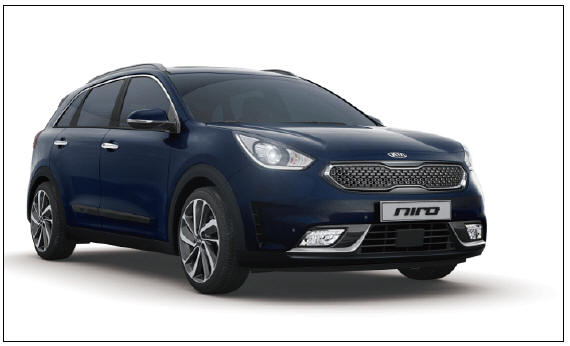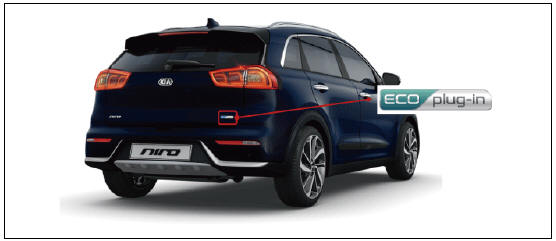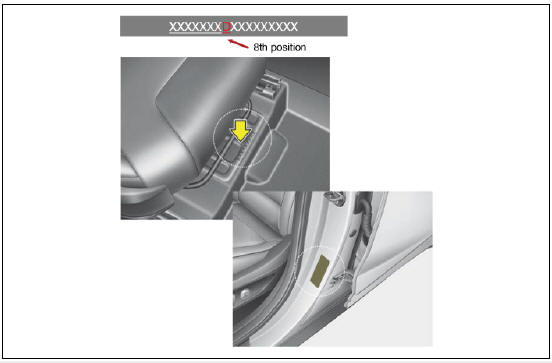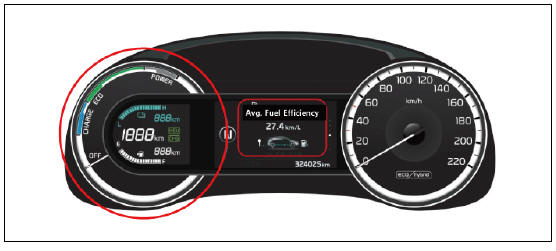KIA Niro: Emergency Rescue Guide - Introduction/ Identification
Emergency Rescue Guide - Introduction
Document Purpose
The purpose of this document is to familiarize first responders and the towing/roadside assistance industry with the proper methods to handle the Niro PHEV in an emergency situation. This guide gives a basic overview of key vehicle systems and instructions for dealing with the different types of emergencies encountered by first responders. The emergency response procedures for this vehicle will provide how to deal with the high voltage electrical system.
Within this Emergency Response Guide you will find Notices, Cautions, Warningsand Dangers which provide critical information and help you do your job safely andefficiently. Below are the definitions of these terms. When you see a Notice, Caution,Warning or Danger, be certain you understand the message before you attempt toperform any part of an emergency response procedure.
Warning
A Danger alerts you to a hazardous situation which, if not avoided willresult in death or serious injury.
Warning
A Warning alerts you to a hazardous situation which, if not avoided, could result in death or serious injury.
Warning
A Caution alerts you to a hazardous situation which, if not avoided, could result in minor or moderate injury.
Warning
A Notice alerts you to a situation which, if not avoided, could result in vehicle damage.
Vehicle Description
As with other PHEV, the Kia Niro PHEV uses the combination of a conventional gasolinepowered internal combustion engine and a high voltage electric motor to propel the vehicle. This combination provides for improved gas mileage over a conventional Kia as well as an increase in power over the standard 4-cylinder engine. Unlike HEV, Niro PHEV's high voltage battery can be recharged through the charge port on the left fender. It increases the driving range at EV mode and fuel efficiency. And also the high voltage battery is recharged automatically while driving. This is accomplished through the engine and regenerative braking system that produces electricity while driving and braking.

Emergency Rescue Guide - Identification
Identifying a Kia Niro
"Eco plug-in" logo on tail gate
The Niro PHEV can be easily identified by the "Eco plug-in" logo attached on the tail gate.
Warning
Electrocution Risk
The hybrid logo can become hidden after a crash due to damage to the vehicle. Always be sure to utilize additional methods of identification before determining the vehicle is not a hybrid.

Engine Room
A "plug-in Hybrid" badge is also displayed under the hood on the engine cover. Also, the High Voltage cabling is orange per SAE standard. Cables run from the bottom of the vehicle where they connect the High Voltage Battery to the HPCU (Hybrid Power Control Unit), Motor, Inverter, and other High Voltage components at the front of the vehicle.The presence of orange cables under the hood identifies the vehicle as an PHEV.

VIN Label
The VIN (Vehicle Identification Number) identifies the Hybrid with a "D" displayed in the 8th position, as shown in the below drawing.
The VIN can be found:
- Underneath the front passenger seat (or driver seat).
- On the vehicle certification label attached to the driver's side (or passenger) center pillar.

Niro Cluster Instrument Panel
The Niro PHEV Cluster Instrument Panel displays the PHEV specific features such as high voltage battery SOC (State of Charge) in the highlighted part.

READ NEXT:
 High Voltage System
High Voltage System
Vehicle components
12V auxiliary battery
The 12V auxiliary battery is located in the right side of the luggage room,
and powers all of the vehicle's standard electronics like
radio, air conditioner, etc. Also, it powers the HPCU (Hybrid
 Airbag system (SRS: Supplemental Restraint System)
Airbag system (SRS: Supplemental Restraint System)
Airbag
Seven airbags are installed in the Niro, located in standard area of the
vehicle so that the first responder can find them
immediately. Before emergency procedure, make sure the vehicle ignition switch
is turned off, disconnect the negat
SEE MORE:
 Curtain air bag
Curtain air bag
* The actual air bags in the vehicle may
differ from the illustration.
Curtain air bags are located along both
sides of the roof rails above the front
and rear doors.
They are designed to help protect the
heads of the front seat occup
 Front Suspension System
Front Suspension System
Front axle
Stabilizer bar
Gear box
Drive shaft
Subframe
Stabilizer link
Front lower arm
Front Strut Assembly Components and components location
Strut assembly
Insulator
Bearing
Spring upper pad
Spring
Dust cove
Categories
- Home
- KIA Niro EV, Hybrid - Second generation - (SG2) (2021-2024) - Owner's manual
- Kia Niro - First generation - (DE) (2017-2022) - Service and Repair Manual
- Contact Us
